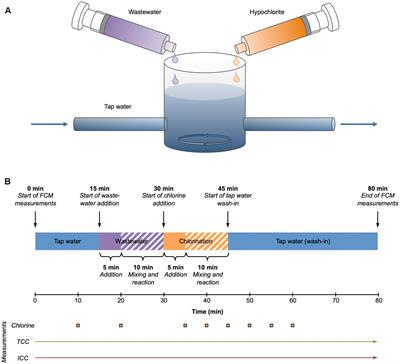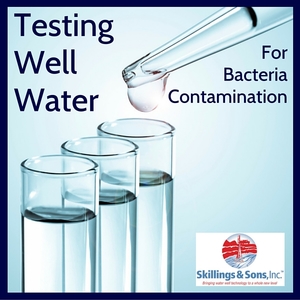Bacteria Testing - The Facts
Wiki Article
8 Easy Facts About Bacteria Testing Explained
Table of ContentsBacteria Testing - QuestionsSome Ideas on Bacteria Testing You Should KnowThe Only Guide for Bacteria TestingSome Known Incorrect Statements About Bacteria Testing Not known Facts About Bacteria TestingBacteria Testing Can Be Fun For Everyone
Coliforms are germs that are always existing in the digestive tracts of animals, consisting of human beings, and are found in their wastes. They are additionally found in plant and soil product. Water air pollution created by fecal contamination is a serious problem as a result of the capacity for having diseases from virus (diseasecausing microorganisms).Consequently, it is not practical to evaluate for pathogens in every water example gathered. Instead, the visibility of virus is determined with indirect proof by testing for an organism such as coliform bacteria. Coliforms originate from the exact same resources as pathogenic organisms. Coliforms are fairly very easy to determine, are usually present in bigger numbers than even more unsafe virus, and reply to the setting, wastewater therapy, and water treatment similarly to lots of pathogens.

The Definitive Guide to Bacteria Testing
is the significant types in the fecal coliform team. Of the five general groups of germs that comprise the total coliforms, only E. coli is normally not located expanding and recreating in the atmosphere. Consequently, E. coli is considered to be the species of coliform bacteria that is the very best indication of fecal pollution and the possible visibility of virus.Some rare pressures of E. coli, especially the pressure 0157: H7, can create significant ailment. Current break outs of disease triggered by E. coli 0157: H7 have actually created much public concern about this microorganism. E. coli 0157: H7 has actually been found in livestock, poultries, pigs, and lamb. A lot of the reported human instances have actually resulted from consuming under cooked burger.
coli 0157: H7 brought on by contaminated alcohol consumption water supplies are uncommon. Testing for microorganisms is the only trustworthy way to understand if your water is secure. You can not tell by the appearance, taste, or scent of the water if disease-causing organisms remain in it. The New York City State Division of Wellness suggests that well proprietors check their water for coliform microorganisms a minimum of annually.
More About Bacteria Testing
Late springtime or early summertime are the most effective times to check your well, considering that coliform contamination is most likely to show up during damp climate (Bacteria Testing). Whether your test results are favorable or negative, understand that the sample you collected is simply a "picture" of your well's water high quality. The even more examples you have actually evaluated, the more positive you can be concerning the high quality of the water you are drinking
A faulty well is often the cause when coliform bacteria are found in well water. - seals around cables, pipelines, and where the cap fulfills the case may be fractured, allowing impurities - splits or holes in the well casing enable water that has actually not been filteringed system with the soil to go into the well.
Unknown Facts About Bacteria Testing
The U. S. Epa (EPA) requires public water supply to consistently examine water for complete coliform microorganisms and E. coli (Bacteria Testing). Safe alcohol consumption water does not have E. coli or other virus in it. Here are some referrals on how to avoid and address coliform bacteria contamination: Protect Your Well by building it in a risk-free areaYou are accountable for maintaining your well water risk-free and testing it as required. All well testing should be done through a certified laboratory. Contact a Minnesota Division of Wellness (MDH) recognized research laboratory to get a sample container and instructions on just how to send an example. You can also contact your county to see if they have any type of programs to make testing your water less complicated.
Evaluate your well water once more after sanitation to verify there are no coliform germs. You can make use of the water again, without steaming, when the well has actually Get More Information been sanitized and the water no much longer evaluates positive for coliform microorganisms.
Bacteria Testing Things To Know Before You Get This
Your public water supply is routinely checked for coliform bacteria. The system will certainly provide a public notice within 24 hr if it spots E. coli. The public notice will certainly tell you what you should do to stay secure. You can discover the coliform germs test results for the system serving where you live by reading the system's Water Top quality Report (likewise known as a Consumer Confidence Report [CCR].You can discover the coliform microorganisms examination results for the systems serving locations besides where you obey getting in touch with the water system.
The National Ground Water Organization (NGWA) suggests well redirected here proprietors check their water a minimum of annually for germs, nitrates, and any impurities of local concern. Extra frequent testing must be thought about if: There is an adjustment in the preference, odor, or appearance of the well water, or if a problem occurs such as a broken well cap, inundation by floodwaters, or a brand-new contamination resource The well has a history of bacterial contamination The septic tank has recently malfunctioned Member of the family or home guests have recurrent events of stomach illness An infant is residing in the home, or To keep track of the effectiveness and efficiency of home water treatment devices.
Bacteria Testing for Beginners
Extra examinations may be advised if water shows up gloomy or oily, if microbial growth is visible on fixtures, or water therapy gadgets are not working as they should. Call a public health and wellness inspector to see what's best for your water system. Coliforms are a group of bacteria that are nearly all over.Report this wiki page